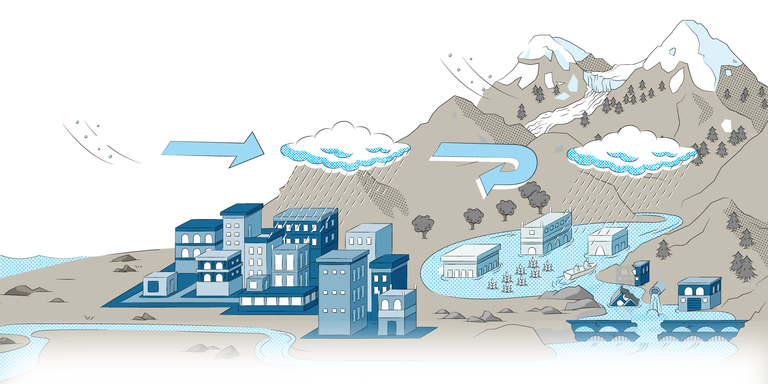


The monsoon, a weather phenomenon in the throes of disruption
Investigation'The Earth's Pulses' (4/6). Agriculture in South Asia, particularly India, depends on the monsoon providing the manna of rainfall. However, the rainy season is in the throes of disruption.
Kisna and Alka scanned the sky in despair. The endlessly milky-white sky didn't suggest the slightest drop of rain for a long time to come. Still, day after day, this exhausted farming couple from Maharashtra, in central India, wait for the clouds and keep faith in the germination of the seeds sown on their meager plot of land. Their survival depends on it. Like their neighbor – a farmer who chose to end his life – they have loan sharks on their heels, ready to seize the meager harvest they will eventually obtain, after borrowing more than they could afford in order to buy fertilizer.
Their life is the focus of a movie, Gabhricha Paus (The Damned Rain), released on the subcontinent in 2009. The film's director, Satish Manwar, wanted to tell the story of climate change's impact on agriculture in South Asia. "The monsoon has changed since I was a child, and I have the impression that no one is aware of the extent of it yet," explained the 48-year-old filmmaker from Mumbai. "The forecasts are completely unreliable, and no matter how closely I watched the weather during the shoot, nothing went as expected. It wasn't supposed to rain, but we actually had showers from day one. What a catastrophe for a film about drought!"
The monsoon isn't what it used to be. It's unpredictable, erratic, scanty for weeks and then suddenly unleashed over a short interval. It dares to contradict the Old Testament: "The wind blows to the south and turns to the north; round and round it goes, ever returning on its course (...) What has been will be again, what has been done will be done again; there is nothing new under the sun," according to Ecclesiastes (1, 6-9).
Now retired in Pune, a three-hour drive from Mumbai, Rajan Kelkar agreed that "the arrival of the monsoon is the only event both as certain and unpredictable as death." This scientist, who headed the national weather service, the India Meteorological Department (IMD), from 1998 to 2003, said that the phenomenon is first and foremost "a spiritual celebration in which the entire population gathers with joy and hope."
The word "monsoon" comes from Arabic. It means "turning winds" or "season of winds favorable to navigation." Coins found by archaeologists in Kerala bear witness to the fact that for millennia, merchants have been taking advantage of the monsoon to trade. "In ancient times, ships from the Middle East arrived in India carried by south-westerly monsoon winds from early summer onward. They would settle here for a few months, trade spices, then return home when the wind turned north-easterly in September," explained Kelkar.
You have 85.79% of this article left to read. The rest is for subscribers only.
